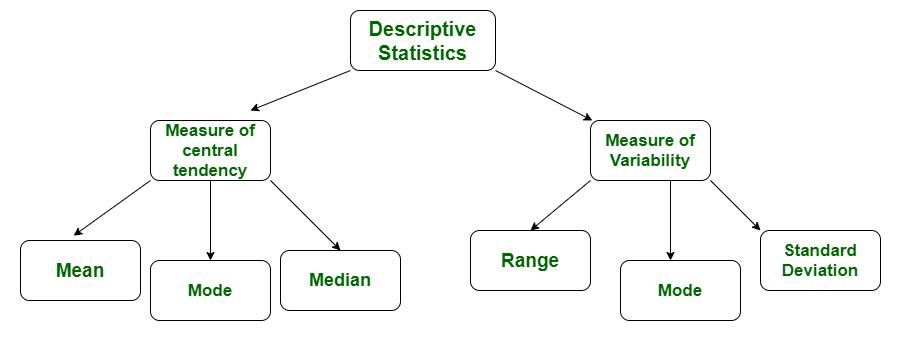Basicintroduction
Inductivestatisticsisbasedonrandomsamplingandinferringthepopulationbasedonpartialdata(data)Method,thatis,themethodofusingsampledatatomakeinferencesaboutthetotalnumberofsamplestaken.Itisalsooneofthebasicpillarsofmathematicalstatisticalmethods.
Forexample,ifthereare10,000householdsinacity(overall),weselect200households(sample)tostudytheirlivingstandards,andinferthelivingstandardsoftheentirecitybasedonthe200households.

Thevaluecalculatedfromthesampleisusuallycalledthestatisticalvalue;thevalueinthepopulationiscalledtheparametervalue.Inferentialstatisticsistousethestatisticalvaluesofthesamplestoinfertheoverallparametervalues.Therefore,howtodrawsamples,howreliablethesamplesare,howtoensurethereliabilityofanalysis,andconducthypothesistestingareallissuesthatneedtobestudiedininferentialstatistics.
Inductivestatisticsaredividedintotwocategories:(1)Parameterestimation,whichistoestimatetheoverallparametervaluebasedonthestatisticalvalueofarandomsample.(2)hypothesistensisabitdifferentinlogicfromparameterestimation.Itfirstassumeswhattheoverallsituationis,andthenusesthestatisticalvalueofarandomsampletotestwhetherthisassumptioniscorrect.Itcanbeseenthatalthoughparameterestimationandhypothesistestingarebothinferentialstatistics,theyareslightlydifferentinlogic.Theformerlooksatthesamplesituationbeforeaskingabouttheoverallsituation;thelatterassumestheoverallsituationbeforesamplingandanalyzingthesampledata.Insociologicalresearch,mostinferentialstatisticsfirstestablishahypothesisandthentestthehypothesis,soinferentialstatisticalmethodssuchashypothesistestingareoftenused.
Parameterestimation
Parameterestimationistoscientificallyestimatethesizeandrangeoftheoverallparametervaluebasedonthesamplingresults.Therearetwomethodsforparameterestimation:①Pointestimation.Amethodofdirectlyestimatingunknownpopulationparametersusingsamplestatistics.Forexample,take100juvenileoffendersfromacertaincityasasample,calculatetheiraverageageof16.5years,andthenusethisvalueastheaverageageofjuvenileoffendersinthecity.Thisestimationmethodofsubstitutingapointforasurfaceiscalledapointestimationmethod.Thepointestimationmethodisgenerallyonlyusedtomakearoughestimateoftheoverallparameters.Becauseitcannotexplaintheaccuracyandreliabilityoftheestimation,itisrarelyused.②Intervalestimation.Amethodofestimatingarangeofvaluesthattheoverallparametermayfallintowithacertaindegreeofcertainty.Forexample,itiscalculatedthattheaverageageofjuvenileoffendersinacertaincitymaybeintherangeof16-17yearsold,thiskindofinferencemethodforestimatingtheoverallparametersinacertainintervalistheintervalestimationmethod.Duetotheexistenceofsamplingerror,theintervalestimationwillfluctuateduetotheinfluenceofsamplestatisticsandsampleerror.Therefore,itisnecessarytojudgethedegreeofcertaintyofthesuccessoftheestimation.Thedegreeofcertaintycanbeexpressedbytheconceptofasignificantlevel.Theso-calledsignificantlevelreferstothemaximumprobabilityofarealisticerrorwhenthereisnorealdifferencebetweenthesampleandthepopulation,calculatedaccordingtotheprobability.Forexample,ifthejuvenileoffendersinacertaincityarerepeatedlysampled100times,ifthereare96or91intervalestimatesthatincludetheaverageageofthejuvenileoffendersbetween16-17yearsold,thentheprobabilityofasuccessfulestimateis96%or91.%,thatis,thesignificancelevelreaches4%(0.04)or9%(0.09),whichmeansthattheprobabilityofestimationerrordoesnotexceed4%or9%.Theestimatedintervalobtainedatacertainlevelofsignificanceiscalledtheconfidenceinterval.Itshouldbenotedthatthehigherthesignificancelevelselectedintheintervalestimation,thehigherthedegreeofconfidence.Thegreatertherangeofintervalestimation;conversely,thesmallerthedegreeofconfidence,thesmallertherangeofintervalestimation.
hypothesistens
hypothesistensistojudgewhethertheoriginalhypothesisisacceptedorrejectedbasedonthestatisticalresultsofthesamplesurveyonthebasisofcertainreliability.Forexample,itisapropositionthat"themaritalstatusofcriminalsinacertaincityismainlyunmarried"isaproposition.Whetherthehypothesisiscorrectornotshouldbetestedwithasampledrawnfromthepopulation,andtheconclusionofacknowledgingoroverturningthehypothesiscanbereached.Therefore,hypothesistestingisonlythebasicprocessoftestingthehypothesisabouttheoverallcharacteristicsmadeinadvancebystudyingthesample.
hypothesistensmainlysolvestwotypesofproblems:①Afterproposingappropriateassumptionsoncertaincharacteristicsofthepopulation,usesamplingmethodstotest.Therearetwocasesoftestresults:oneisthatthereisacertaindeviationbetweenthetestresultandthehypothesis;theotheristhatthetestresultiscompletelyconsistentwiththehypothesis.Ifitisthefirstcase,itisnecessarytounderstandwhetherthedeviationreallyindicatesthatthehypothesisiswrongoriscausedbysamplingerror;inthesecondcase,itcannotbesaidthatthehypothesisiscorrect,oritmaybecausedbysamplingerror.②Performasignificanttestonthedifferencebetweenthestatisticalvaluescalculatedfromtwoormoresamples.Thedifferencebetweenthestatisticalvaluesmaybethedifferenceoftheoverallparametersofthedifferentpopulationstheyrepresent,oritmaybethesamepopulationbutcausedbysamplingerrors,soitneedstobetestedforsignificance.Inthesignificancetest,ifthetestresultsaresignificantlydifferent,itcanbeinferredthatthisdifferencerepresentsthedifferencebetweentheoverallparameters.Otherwise,thesamplesmaycomefromthesamepopulation,orthereisnorealdifferencebetweentheoverallparameters,oritcanbeconsideredasthestatisticalvalueofthesample.Thedifferenceisonlyduetosamplingerror.Itshouldbenotedherethat,atanytime,thedifferencebetweenthestatisticalvaluesofthesamplescannotbeusedtorashlyconcludethatthereisadifferencebetweentheparametersofthepopulationtheyrepresent.
